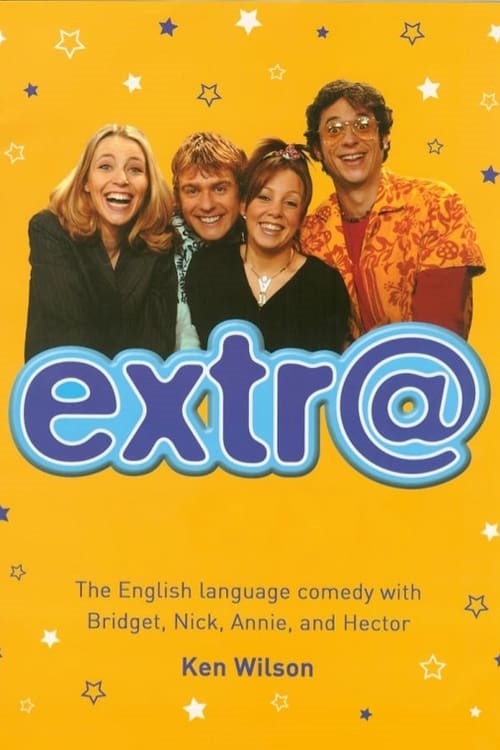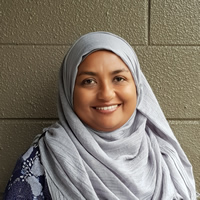Quick Tip: 3 Extensive Listening Resources for Beginner English Learners
by Kelly Nelson
According to research conducted by Waring (2008), some of
the key elements of extensive listening are the following:
-
The learner should be able to
understand 90% of the content and 95% of the vocabulary and grammar.
-
They should be able to listen
without pausing or replaying.
-
They should find enjoyment
in the listening.
As an English as a foreign
language (EFL) teacher working with A1-A2
level students for the past 5 years at a university in Japan, I have
been searching for enjoyable extensive listening materials that meet these
criteria—in other words, that are at the correct comprehension level for my
students. After searching the internet high and low, I have found three excellent
resources that I would love to share with you.
1. We Speak
NYC
 We Speak
NYC has been my favorite resource that I have used with my
classes for the past 4 years. The site offers a
show that is, at present, 19 episodes long, with each episode running
about 25 minutes. Created by the NYC Mayor’s Office for Immigrant Affairs, each
episode offers a plethora of resources, from scripts and closed captioning to
study guides and quizzes. The speakers have a wide variety of accents, which is
also very helpful for students taking standardized listening exams, such as the
TOEIC. The topics can lead to interesting class discussions and activities as
well, ranging from worker’s rights to food pantries to health and stress and
anxiety.
We Speak
NYC has been my favorite resource that I have used with my
classes for the past 4 years. The site offers a
show that is, at present, 19 episodes long, with each episode running
about 25 minutes. Created by the NYC Mayor’s Office for Immigrant Affairs, each
episode offers a plethora of resources, from scripts and closed captioning to
study guides and quizzes. The speakers have a wide variety of accents, which is
also very helpful for students taking standardized listening exams, such as the
TOEIC. The topics can lead to interesting class discussions and activities as
well, ranging from worker’s rights to food pantries to health and stress and
anxiety.
I have my
students watch one episode each week, complete one of the provided quizzes,
then create video blogs about the topics or do group discussions on the issues.
My beginner students really enjoy the videos and have all felt that it was at
an accessible level for them.
 2.
Extr@
2.
Extr@
Channel 4
Learning created this early 2000s sitcom for beginner English
language learners. There are 30 episodes, which are each about 24 minutes long.
The speech is slower paced and the vocabulary is at an appropriate level for
A1-A2 students.
It is an
enjoyable comedy about friends living in London with a pen pal from Argentina,
so it is also a great opportunity to talk about culture shock, language
immersion, study abroad, and cultural differences. This show was also made in
French, Spanish, and German, so it can be used for beginner students of many
languages.
Episodes of
this show can be found easily on YouTube.
3. Samantha Brown’s
Places to Love
 Forty-three
episodes of this PBS show can be found on
their website. Each of the 27-minute episodes features a different
location around the world and provides travel tips, history, and cultural
information about the places.
Forty-three
episodes of this PBS show can be found on
their website. Each of the 27-minute episodes features a different
location around the world and provides travel tips, history, and cultural
information about the places.
I used this
series with my A2-B1 students. It is a wonderful resource for students
interested in traveling, studying abroad, and learning about new cultures. In
my classroom, we also used it to generate more interesting discussions,
research on favorite locations, and presentations on the various locations and
cultures.
Samantha-Brown.com
offers a study guide for 10 episodes.
Conclusion
These are
some of the resources I have used successfully in my classroom. I have seen my
students improve their listening comprehension skills and vocabulary while
truly enjoying the content of the shows. I hope that you are able to use these
resources with your students or that you are able to find and share other ones
with the TESOL community.
Reference
Waring, R.
(2008). Starting extensive listening. Extensive Reading in
Japan, 1(1), 7–9.
Kelly
Nelson, MEd TESOL, has been teaching for 12 years and is currently teaching at
Tokyo International University, where she is using these extensive listening
resources with her students.
TESOL Blogs
Interested in writing a blog for TESOL?
Read the submission guidelines and send us your post!
Check out some of the most recent TESOL Blogs:
|
3 Ways to Harness the Power of Translanguaging, by Naashia Mohamed

When 14-year-old Zena moved from Turkey to New Zealand, she was apprehensive about going to school. Zena had learned some English in school in Turkey but was not confident that she would be able to follow the teachers or converse with other students when she joined her new school. Zena’s family was Egyptian and spoke Arabic and Turkish at home. Zena’s parents worried that because she was an English language learner, Zena wouldn’t fit into her new school or be able to keep up with her school work even though she had been an excellent student in her previous school.
Zena’s story is not unique. It is one that many children and young people from immigrant and multilingual backgrounds share. Children all over the world receive education in a language that is not spoken in their homes, or in a language that forms only part of the linguistic landscape of the home environment. In such cases, what can educators do to make students feel welcome and create a sense of belonging in school? Read more. |
|
What’s Different About Teaching Second Language Reading to Adults? by Barbara Gottschalk

Early in my career, I used to be jealous of reading teachers. They had so much native speaker reading research to back them up, they had curriculum, they had progress tests, and they had ways to diagnose deficits. In contrast, as an ESL teacher, it seemed like I had…nothing. Even worse, I was sometimes expected to use methods and materials that weren’t appropriate for my students. The differences with young English learners are just as great with older students. To prepare to write this blog post on what’s different about teaching second language reading to adults, I talked with a teacher who has been on both sides of this scenario. Read more. |